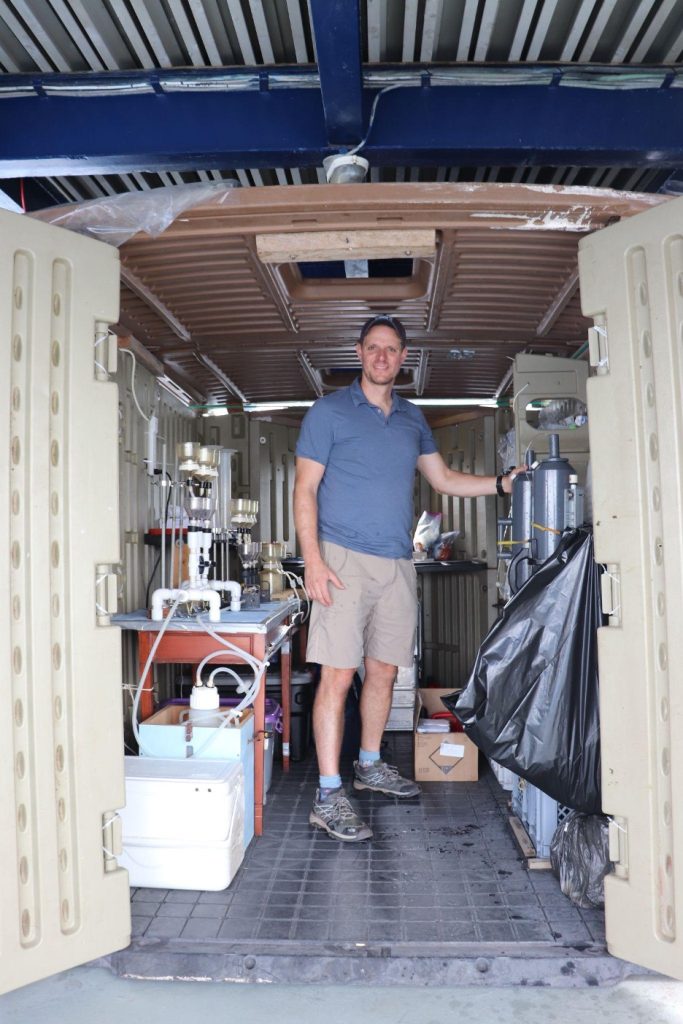In November 2022, a group of scientists embarked on a marine expedition to the Galapagos Islands to measure ocean conditions, the health of local wildlife like sea lions and marine iguanas, the impact of plastics on the environment and more. Over the course of 16 days, the team traveled to 14 islands on the Sierra Negra ship. In this photo essay by Adrian Marchetti, take a behind the scenes look at their research adventure.

Greetings from the Galapagos! This is from the dock in Puerto Ayora on Santa Cruz Island where we put our gear onto a zodiac to then bring out to the ship that is anchored in the bay. There are many iguanas that like to sunbathe on the dock, so you need to be careful where you step. Also see if you can spot the great blue heron in the mangrove bushes in the background.

This is the lab in which the majority of our samples are processed at sea. As there is limited space inside the Sierra Negra we modified a plastic garden shed to become a state-of-the-art oceanographic lab. Its window provides some of the best views of the islands.

In order to measure primary productivity, we incubate water collected at different depths in on-deck incubators that have surface seawater flowing through them. The screens on these incubators mimic the light at the depths in which these samples were collected. Can you guess which incubator mimics the shallowest depth and which the deepest?

Cristina Vintimilla, Laboratories Manager at the GSC, is hard at work filtering samples following collection from a recent station.

Between stations I enjoyed spending time in a hammock I set up underneath the Sierra Negra’s helicopter deck. The view could not be beat.

We did not miss a station and were even able to add a few. Seawater temperatures were colder than usual as the effects of the ongoing La Niña were obvious. We will return in March 2023 to process samples at the GSC and bring back the remaining samples at that time. For the time being, all samples are being safely stored at the GSC. The 2022 Galapagos Marine Research Expedition team had a very successful trip!
This post was edited for length. Read Marchetti’s full photo essay here.
By Adrian Marchetti, Center for Galapagos Studies
